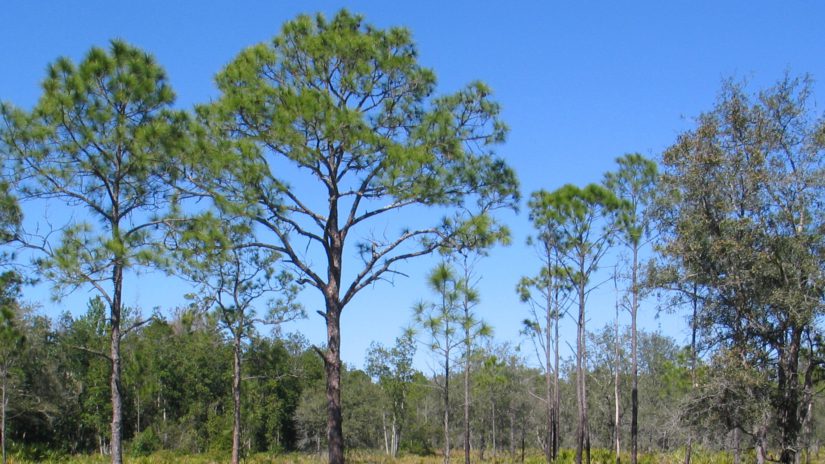Lake Seminole Management Area

At A Glance…
- 31 Acres
- Located near Largo
- Supports wetlands and oak hammock natural communities
Background
The Lake Seminole Management Area is between Lake Seminole and the Lake Seminole Bypass Canal near the city of Largo in unincorporated Pinellas County. This part of the county has experienced a dramatic transformation over the years, largely caused by extreme changes to the natural groundwater system and surrounding urbanization. Lake Seminole was created in the 1940s when Park Boulevard was constructed and the upper reaches of Long Bayou were separated. The County built the Lake Seminole Bypass Canal in the late 1970s to reduce flooding and improve water flow in the region.
Aerial photographs suggest the area once supported extensive marshy and swampy wetlands. Residential development that expanded over the years resulted in the highly urbanized setting of today. The Pinellas County Board of County Commissioners acquired the property in 1994. This natural area, which is closed to the public, is managed by Parks & Conservation Resources.
Characteristics
Located within the Long Bayou Drainage Basin, the natural groundwater flow of this management area is determined by the adjacent Lake Seminole and the Lake Seminole Bypass Canal. Tides play no role in the water flow and quality of this formerly brackish system, which is now regulated as freshwater. Low-lying areas within the region flood frequently and some inland parts of the management area are functionally part of the shallow waters near the lakeshore. Elevation ranges up to 10 feet above sea level. The soils are predominantly classified as poorly drained sands.
Natural communities include low-lying woodlands dominated by longleaf pine, slash pine, and saw palmetto, as well as bottomland forests where the main species are sugarberry, red maple, wax myrtle, buttonbush, and various ferns. Human activities in the Lake Seminole Management Area, including canal maintenance and construction of nearby residences, have disrupted portions of the natural environment and created areas that attract weedy and scrubby plants.
These disturbances have encouraged the extensive spread of invasive non-native species including Brazilian pepper, roadside lantana, wild taro, water hyacinth and Peruvian primrose willow. The spread of other exotics, such as carrotwood, camphor tree, and Chinese tallow tree, has likely been promoted by the surrounding residential landscaping. Rare plant species include the erect prickly pear, cinnamon fern and royal fern.
Management
Since assuming management of this area, the county has focused on controlling non-native species with chemical treatment and by mechanical clearing. As with all small, natural areas surrounded by development, the control of exotic species will be an ongoing challenge. A stormwater treatment facility is in the northern part of this management area.
The southern boundary of the Lake Seminole Management Area is fenced and has signs posted. Maintained areas along the canal are periodically mowed. Though natural communities within the region would have burned historically, reintroduction of controlled burning is not currently a possible management strategy at the Lake Seminole Management Area because of its small size and closeness to residential areas. Additional efforts to restore this management area may include improving the natural groundwater flow and planting native vegetation.
Value
While The Lake Seminole Management Area has significance to local residents and provides economic and environmental benefits to its neighbors, this natural space provides valuable services to all residents and visitors to the region.
By enhancing native biodiversity, it supports countless organisms ranging from microbes to mammals. For example, a variety of wading birds, small mammals and turtles live in this area. This management area also makes important contributions to the region’s natural water system by improving the quality of surface water and promoting the refreshment of groundwater.
For additional information:
Parks & Conservation Resources
12520 Ulmerton Road
Largo, FL 33774
Phone: (727) 582-2100
Fax: (727) 582-2550